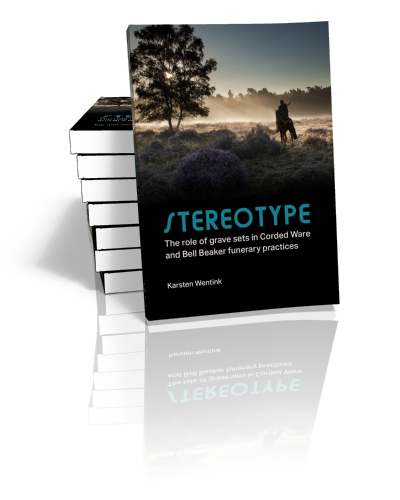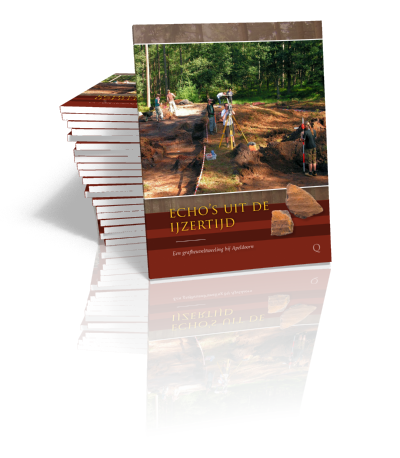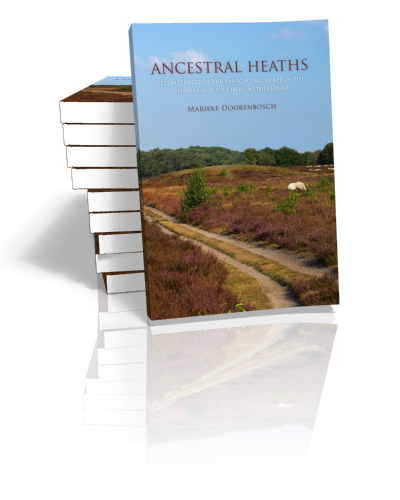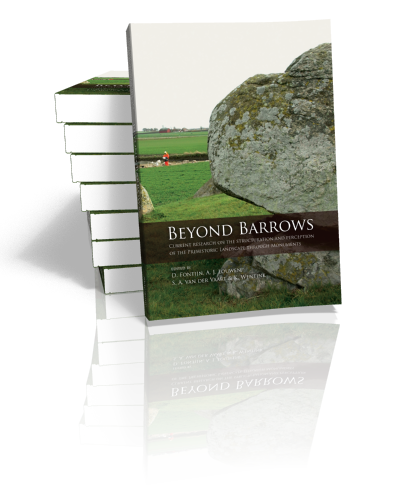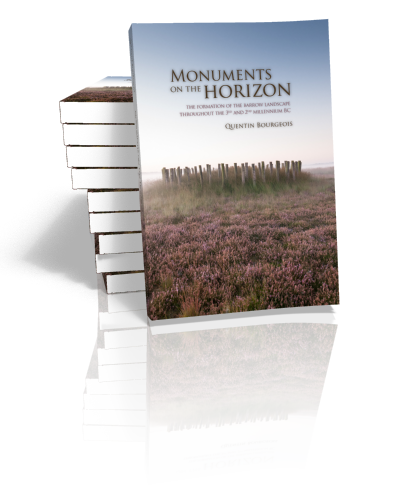Stereotype
The role of grave sets in Corded Ware and Bell Beaker funerary practices
Karsten Wentink | 2020
Throughout northern Europe, thousands of burial mounds were erected in the third millennium BCE. Starting in the Corded Ware culture, individual people were being buried underneath these mounds, often equipped with an almost rigid set…
Echo’s uit de IJzertijd
Een grafheuveltweeling bij Apeldoorn
Evert van Ginkel | 2014
Even ten noorden van de legendarische Echoput bij Apeldoorn liggen twee grote prehistorische grafheuvels in het bos. Er is ooit wel in gegraven, maar niet door archeologen en met onbekend resultaat. Een ploeg archeologen van…
Ancestral Heaths
Reconstructing the Barrow Landscape in the Central and Southern Netherlands
Marieke Doorenbosch | 2013
Barrows, i.e. burial mounds, are amongst the most important of Europe’s prehistoric monuments. Across the continent, barrows still figure as prominent elements in the landscape. Many of these mounds have been excavated, revealing much about…
Transformation through Destruction
A monumental and extraordinary Early Iron Age Hallstatt C barrow from the ritual landscape of Oss-Zevenbergen
edited by David Fontijn, Sasja van der Vaart-Verschoof & Richard Jansen | 2013
Some 2800 years ago, a man died in what is now the municipality of Oss, the Netherlands. His death must have been a significant event in the life of local communities, for he received an…
Beyond Barrows
Current research on the structuration and perception of the Prehistoric Landscape through Monuments
edited by David Fontijn, Arjan Louwen, Sasja van der Vaart-Verschoof & Karsten Wentink | 2013
Europe is dotted with tens of thousands of prehistoric barrows. In spite of their ubiquity, little is known on the role they had in pre- and protohistoric landscapes. In 2010, an international group of archaeologists…
Monuments on the Horizon
The formation of the barrow landscape throughout the 3rd and 2nd millennium BC
Quentin Bourgeois | 2013
Barrows, as burial markers, are ubiquitous throughout North-Western Europe. In some regions dense concentrations of monuments form peculiar configurations such as long alignments while in others they are spread out extensively, dotting vast areas with…
Iron Age Echoes
Prehistoric land management and the creation of a funerary landscape - the “twin barrows” at the Echoput in Apeldoorn
Edited by David Fontijn, Quentin Bourgeois & Arjan Louwen | 2011
Groups of burial mounds may be among the most tangible and visible remains of Europe’s prehistoric past. Yet, not much is known on how “barrow landscapes” came into being . This book deals with that…
Search results for ancestralmounds
:
Stereotype
The role of grave sets in Corded Ware and Bell Beaker funerary practices
Karsten Wentink | 2020
Throughout northern Europe, thousands of burial mounds were erected in the third millennium BCE. Starting in the Corded Ware culture, individual people were being buried underneath these mounds, often equipped with an almost rigid set…
Echo’s uit de IJzertijd
Een grafheuveltweeling bij Apeldoorn
Evert van Ginkel | 2014
Even ten noorden van de legendarische Echoput bij Apeldoorn liggen twee grote prehistorische grafheuvels in het bos. Er is ooit wel in gegraven, maar niet door archeologen en met onbekend resultaat. Een ploeg archeologen van…
Ancestral Heaths
Reconstructing the Barrow Landscape in the Central and Southern Netherlands
Marieke Doorenbosch | 2013
Barrows, i.e. burial mounds, are amongst the most important of Europe’s prehistoric monuments. Across the continent, barrows still figure as prominent elements in the landscape. Many of these mounds have been excavated, revealing much about…
Transformation through Destruction
A monumental and extraordinary Early Iron Age Hallstatt C barrow from the ritual landscape of Oss-Zevenbergen
edited by David Fontijn, Sasja van der Vaart-Verschoof & Richard Jansen | 2013
Some 2800 years ago, a man died in what is now the municipality of Oss, the Netherlands. His death must have been a significant event in the life of local communities, for he received an…
Beyond Barrows
Current research on the structuration and perception of the Prehistoric Landscape through Monuments
edited by David Fontijn, Arjan Louwen, Sasja van der Vaart-Verschoof & Karsten Wentink | 2013
Europe is dotted with tens of thousands of prehistoric barrows. In spite of their ubiquity, little is known on the role they had in pre- and protohistoric landscapes. In 2010, an international group of archaeologists…
Monuments on the Horizon
The formation of the barrow landscape throughout the 3rd and 2nd millennium BC
Quentin Bourgeois | 2013
Barrows, as burial markers, are ubiquitous throughout North-Western Europe. In some regions dense concentrations of monuments form peculiar configurations such as long alignments while in others they are spread out extensively, dotting vast areas with…
Iron Age Echoes
Prehistoric land management and the creation of a funerary landscape - the “twin barrows” at the Echoput in Apeldoorn
Edited by David Fontijn, Quentin Bourgeois & Arjan Louwen | 2011
Groups of burial mounds may be among the most tangible and visible remains of Europe’s prehistoric past. Yet, not much is known on how “barrow landscapes” came into being . This book deals with that…
Browse by subject



